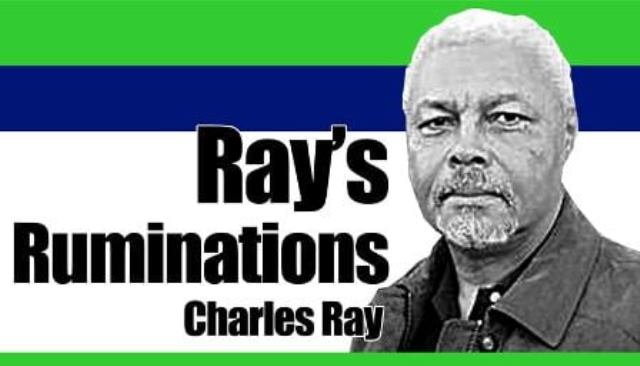
In 2024, Easter Sunday fell on March 31st, and that sparked an extremely interesting conversation in my household—about the mutability of time. My significant other is one of those people who, since Easter Sunday is usually around the middle of April, it’s an April holiday.
My blunt announcement that it’s not almost started an argument, but I quickly launched into a recitation of the history of the holiday, followed by a lecture on how various cultures and political entities treat time, which left my significant other slack-jawed and saucer-eyed in utter amazement.
You see, time, rather than being an immutable, linear concept, is a highly malleable, culturally and politically determined measure of what time it is or when things happen in certain spots and areas on Earth. I decided not to get into the concept of time as it would exist (will exist) when we are routinely able to reach the farthest part of our solar system or galaxy, or (gasp) even beyond our Milky Way Galaxy.
But, I digress. Let’s talk about how time is viewed right here on terra firma. We’ll begin with Easter since that’s the event that started all this.
Easter falls on a different date each year, but in Western Christianity it’s always on a Sunday between late March and late April. But, the Gregorian and Julian calendars have a 13-day difference, so the precise date range differs.
For example, for Western Christians, the dates are March 10 to April 12, and for the Orthodox Christians, the dates are 4 to May 8. For those people in other time zones who happen to be Christians and celebrate Easter, encountering this difference can be unsettling. The most common date for Easter is April 16 and the least common dates are March 22 and 34. Easter Sunday is on March 31 only rarely. The last time was in 2013, and the next time will be 2086.
So, how is the date for Easter Sunday determined anyway? Well, in simple terms, it’s the first Sunday after the full moon that follows the spring equinox, which is the moment the sun’s rays shine directly on the equator.
Easter, though, is not the only element of time that confuses. I teach online graduate courses for Arizona State University. I live in Maryland, the campus is in Arizona, and my 20 or so students in each class live all over the US and the world.
This past semester, for example, I had students in Washington, DC; Texas, Arizona, California, and Italy. That, my friends, is a lot of time zones, and it made scheduling things like the date and time for turning in assignments or attending online class meetings a logistical and mental challenge.
Time zones have always been something of a bother for me. Having spent a significant portion of my life as a soldier and then a diplomat and senior government official, more of my life than I care to remember has been spent crossing time zones and adjusting to jet lag and time shifts. Coordinating classes across more than eight time zones often takes me hours to juggle and coordinate, compounded and confounded by the way time zones and outdated concepts like Daylight Savings Time are treated.
Let’s start with time zones. They haven’t always existed. Prior to the late 19th century, timekeeping was purely local. Towns would set their clocks to noon when the sun was at its highest each day, which would then be the ‘official’ time for that town. This was confusing, though, especially when railroads were developed, because of the difficulty of establishing route schedules across widely separated towns where the sun was seen at its highest at different times.
In 1878, Sir Sandford Fleming, a Canadian, proposed the system of worldwide time zones that’s in use today. His recommendation was that the world be divided into 24 time zones, each 15 degrees apart. This was viewed as brilliant at the time. In 1884, a conference in Washington, DC was held to standardize time and select the prime meridian, from which the 24 zones would be measured. Greenwich, England was selected as the zero degree point, and we were off to the races. The problem was that not all countries made the switch right away, and even in the United States, use of the time zones wasn’t mandatory until 1918.
Even today, time zones are different in different places. China, for example, which based on Fleming’s recommendation would be five time zones wide, uses one single time zone, and in some countries of the Middle East and South Asia use half-hour time zones. Singapore in Southeast Asia, for example, is a half hour off from its neighbors.
At the same time the time zones were made mandatory in the United States, in 1918, we introduced another confusing factor, Daylight Savings Time (DST). Intended to save fuel costs during World War I by adding an extra hour of sunlight to the day, it was not, and is not, universally accepted.
Hawaii and Arizona (except the Navajo Nation in the northeastern part of Arizona) do not follow DST. As a consequence, Arizona, which is in the Mountain Standard Time Zone, is one hour ahead of California (Pacific Standard Time) for part of the year, and on the same time for the rest. My students who happen to live in California go bonkers when the time changes in the fall and spring trying to change all their schedules. It doesn’t make me happy either, because if I haven’t remembered to do it at the start of the term, I have to go through each lesson module and manually change all times.
So, you see, time is not an immutable concept. It’s a devilish device designed to daunt and dazzle us with its very mutability. | NWI




